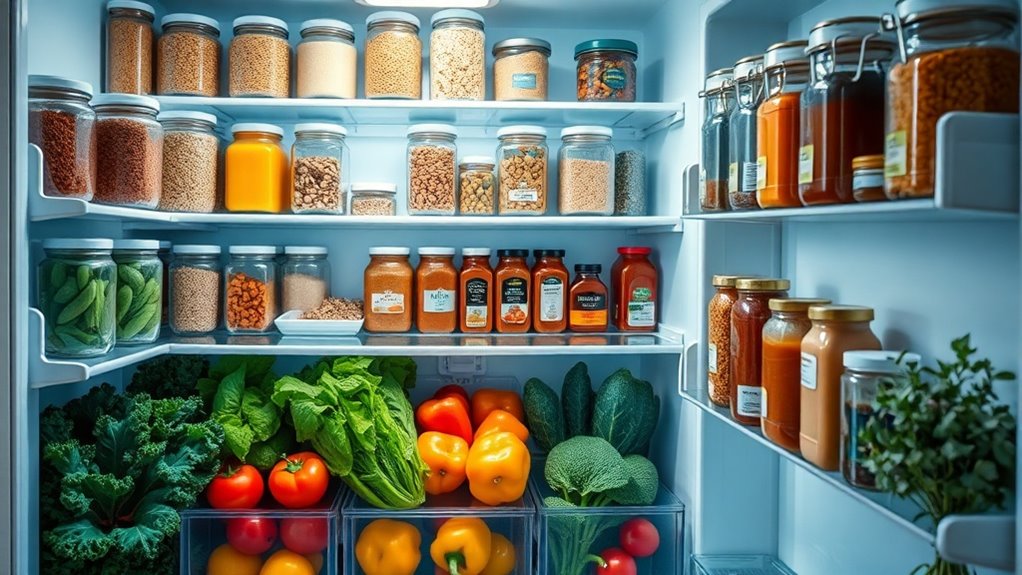The Best Way to Organize Your Fridge for Freshness
Organizing your fridge for freshness isn’t just about aesthetics; it directly impacts food quality and safety. By understanding temperature zones and proper storage methods, you can significantly prolong the lifespan of your groceries. From the placement of dairy to the way you store fruits and vegetables, every detail matters. It’s critical to implement strategies that minimize spoilage—so, how can you ensure your fridge is running at peak efficiency?
Understanding Temperature Zones in Your Fridge
Understanding the temperature zones in your fridge is crucial for maintaining food safety and quality. Effective fridge organization ensures that perishable items are stored at optimal temperatures—typically, the coldest areas are at the back, while warmer zones are near the door.
Place raw meats on lower shelves to prevent cross-contamination, optimizing your fridge’s performance and extending the freshness of your food.
The Ideal Organization for Dairy Products
[Dairy products are among the most delicate items in your fridge, so organizing them properly can significantly enhance their freshness and quality.
Store milk and cream on the middle shelves, where temperatures remain consistent. Keep cheeses wrapped tightly to reduce spoilage.
Position yogurt towards the back, away from the door, to maintain optimal temperature. Following these guidelines ensures you’re preserving your dairy effectively. Additionally, using activated charcoal can help absorb odors and moisture, further enhancing the freshness of your dairy products.]
Storing Fruits and Vegetables for Maximum Freshness
When you want to keep fruits and vegetables fresh, it’s crucial to understand where to store them in your fridge.
Place fruits in the crisper drawer, as it maintains humidity levels ideal for their longevity.
Vegetables, on the other hand, prefer a lower humidity environment, so store them separately.
Never crowd them; airflow prevents spoilage and maximizes freshness.
Best Practices for Meat and Poultry Storage
To ensure meat and poultry remain safe and fresh, it’s essential to utilize appropriate storage practices.
Store raw meat and poultry on the bottom shelf to prevent cross-contamination. Keep them sealed in their original packaging or wrapped tightly.
Maintain a fridge temperature of 32°F to 40°F. Always check expiration dates, and consume or freeze within recommended timeframes for optimal freshness.
Utilizing Airtight Containers and Labels
After ensuring meat and poultry are safely stored, attention turns to other food items in the fridge. Utilizing airtight containers preserves freshness and prevents cross-contamination. Labeling these containers helps you track inventory and expiration dates efficiently.
| Food Item | Container Type |
|---|---|
| Vegetables | Clear airtight bins |
| Leftovers | Glass containers |
| Dry Goods | Plastic airtight jars |
| Snacks | Reusable silicone bags |
Regular Maintenance and Cleaning Tips
Although keeping your fridge organized is essential, regular maintenance and cleaning are equally important to ensure optimal food safety and longevity.
Schedule a deep cleaning every month. Wipe down shelves with a mild detergent and warm water, and check expiration dates on items.
Consider cleaning spills immediately to prevent odors and bacteria. A well-maintained fridge supports freshness and reduces waste.

